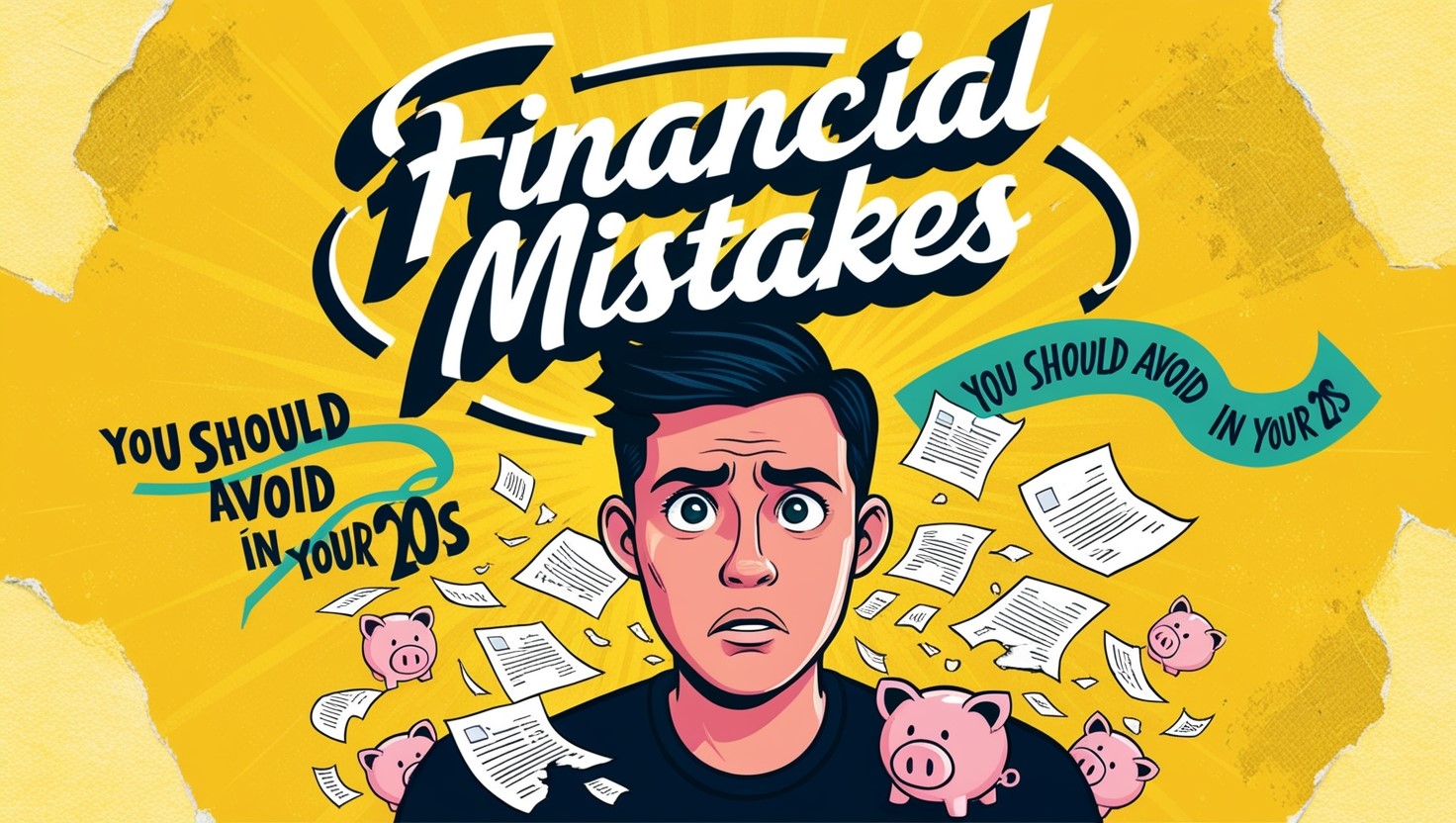Why Impulse Buying Happens and Its Impact
Impulse buying is something most of us have done—maybe it’s a sudden craving for something new or a flash sale that feels too good to pass up. In the moment, these purchases can seem harmless, even exciting. But over time, impulse buying can chip away at your savings, add clutter to your life, and leave you feeling like you’re not fully in control of your money.
So, why do we do it? Impulse buying often happens because of emotions. We might be feeling stressed, bored, or just craving a quick boost. Shopping, whether online or in-store, can provide that instant hit of satisfaction. Add to that the endless ads, tempting sales, and “limited time only” deals, and it’s easy to see how we’re constantly nudged toward buying things we didn’t plan on.
The real impact of impulse buying goes beyond just the money spent. It can create a cycle of regret and frustration, as those quick buys often don’t bring the lasting happiness we hoped for. This article explores how to break free from that cycle, helping you understand why impulse buying happens and offering practical ways to make lasting changes in your spending habits. Because gaining control over impulse buying isn’t just about saying “no”—it’s about creating a healthier, more intentional approach to how you use your hard-earned money.
Understanding the Psychology Behind Impulse Buying
Impulse buying isn’t just about wanting something new; it’s about what’s going on in our minds and emotions in that moment. When you dig a little deeper, impulse purchases are often a reaction to feelings like stress, boredom, or even the need for a quick pick-me-up. Buying something new gives us an instant sense of satisfaction, a brief escape from whatever we might be feeling. But that “retail therapy” high tends to be short-lived, leaving us wondering why we bought something we didn’t really need.
Our brains are also wired for instant gratification, which makes resisting impulse buys tough. The idea of owning something right away feels good, even if we know we might regret it later. Add in marketing tactics like limited-time sales, “only a few left” notices, and flash discounts, and it’s easy to see why even the most budget-conscious among us can give in. These tactics play on our fear of missing out, convincing us that we need to act now or lose out forever.
Understanding these psychological triggers can be a game-changer in managing impulse buying. Once you recognize what’s happening—a mix of emotions, marketing tactics, and a natural desire for immediate rewards—you can start to pause and question whether you’re buying something because you truly want it or simply because it feels good in the moment. By becoming aware of what drives our impulse buys, we gain the power to make choices that align better with our goals.
Recognizing Personal Impulse Buying Triggers
Understanding your own triggers for impulse buying is like finding the key to better control over your spending. Everyone has their reasons for those spur-of-the-moment purchases, and recognizing them is the first step toward change. Triggers can be anything from feeling bored or stressed to seeing a perfectly curated ad pop up at just the right time. The goal is to start noticing these moments and patterns in your own life.
One of the most common triggers is emotional. Maybe you’ve had a long day and buying something new feels like a little reward, or you’re feeling down, and that “add to cart” button offers a quick boost. The problem is, these emotional buys rarely bring lasting happiness, and the momentary lift can quickly turn into buyer’s remorse.
Another big trigger is environmental. Think about it: how many times have you bought something just because you were scrolling through social media or got an email about a sale? Retailers know how to tap into our impulses with perfectly timed offers and clever marketing that makes us feel like we need something we didn’t even know existed.
To help spot your own triggers, try keeping a small spending journal or make a mental note each time you feel the urge to buy something on a whim. Ask yourself what’s happening in that moment—are you feeling bored, stressed, or just tempted by a clever ad? Over time, this awareness helps you pause, take a breath, and make a choice that’s aligned with what you really want, rather than just reacting in the moment.
Recognizing your triggers isn’t about feeling guilty; it’s about gaining insight into your habits. Once you understand what’s driving your spending, you can start to take control in a way that feels natural and empowering.
Setting Clear Financial Goals and Priorities
One of the most powerful ways to curb impulse buying is to have clear financial goals that keep you focused on what truly matters to you. When you know where you want your money to go, it’s easier to pause and think before making a purchase that might throw you off course. These goals don’t have to be huge or complicated—they just need to be meaningful to you.
Start with some simple, achievable goals. Maybe you’re working toward a vacation fund, building up a savings cushion, or paying down debt. These are all solid reasons to think twice before spending on something impulsive. When you feel the urge to buy, remind yourself of these goals. Ask yourself, “Does this purchase bring me closer to or further from what I really want?” This small question can make a big difference.
Creating priorities for your spending helps as well. Think about the things that genuinely add value to your life. Maybe you’re someone who loves experiences over possessions, or maybe you value high-quality items that will last. Aligning your spending with these values not only helps reduce impulse buys but also makes each purchase feel more fulfilling.
Setting these financial goals and priorities gives you a clear reason to say “no” when tempted by unplanned purchases. It’s not about restriction; it’s about making room for what’s truly important. With your goals in mind, each small choice becomes a step toward something bigger, adding purpose to every dollar you save.
Practical Strategies to Curb Impulse Buying
Impulse buying is something we’ve all done, but there are straightforward strategies that can help us slow down and make more intentional choices. These methods aren’t about cutting out every “fun” purchase but about creating a balanced approach that feels satisfying in the long run. Here are a few practical ways to make impulse control easier.
The 24-Hour Rule: Waiting before Making a Purchase to Assess Need vs. Want
One of the simplest ways to avoid impulse buys is to wait 24 hours before completing a purchase. When you come across something you’re tempted to buy, give yourself a day to think it over. Often, that initial urge fades, and you realize you didn’t actually need or want the item after all. If, after 24 hours, you still feel it would genuinely add value to your life, then it might be worth considering. This little pause helps separate fleeting wants from lasting needs.
Setting a Budget for “Fun Spending”: Allowing Guilt-Free Purchases within a Set Limit
Setting a budget for “fun spending” allows you to enjoy occasional treats without going overboard. It doesn’t mean depriving yourself—it’s about deciding how much you can comfortably spend on extras without feeling guilty. This could be a monthly amount you set aside specifically for unplanned purchases. When you know you have a certain budget, it’s easier to enjoy those splurges without buyer’s remorse, keeping your finances on track while still enjoying the little things.
Unsubscribing from Sale Alerts and Retail Emails: Reducing Exposure to Temptation
Retailers are skilled at catching our attention with limited-time offers and exclusive sales. If you often find yourself clicking “buy” on things you didn’t plan to purchase, consider unsubscribing from email lists and sale alerts. Reducing these daily temptations can help you think more clearly about what you truly want and avoid unnecessary purchases. Less exposure means fewer impulses, making it easier to stick to your goals.
Using Cash Instead of Cards: Physical Spending Can Curb Online Purchases
Using cash instead of cards creates a tangible connection to your spending. When you pay with cash, you can physically see the money leaving your hands, making each purchase feel more real. This approach is especially helpful for in-store shopping. And when it comes to online purchases, try using a prepaid card or setting a clear limit on your digital spending—this way, you’re still mindful of each purchase even if you’re shopping from home.
How Each Strategy Can Make Impulse Control Easier Over Time
These strategies aren’t about eliminating every unplanned purchase but about adding intention to each one. As you practice waiting, setting a budget, unsubscribing from temptations, and choosing how you pay, you’ll find that impulse control becomes easier. Over time, these habits make impulse buys feel less appealing and create room for meaningful choices that align with your financial goals.
By practicing these small changes, you’re taking steps toward a healthier, more intentional approach to spending that serves your priorities—and brings a sense of control and satisfaction to each purchase.
Overcoming Setbacks and Staying on Track
Changing your spending habits is a journey, and setbacks are part of the process. Even with the best intentions, there will be times when an unplanned purchase slips through. Instead of feeling discouraged, remember that progress is built on persistence, not perfection. Each setback is simply an opportunity to learn and grow, helping you build a stronger foundation for mindful spending.
Accepting the Occasional Slip-Up
It’s natural to make an impulse buy now and then. Maybe it was a stressful day, or perhaps you just felt the thrill of something new. Instead of beating yourself up, recognize that one slip-up doesn’t erase the progress you’ve made. Practicing self-compassion in these moments helps you bounce back faster, keeping your focus on long-term change rather than a single setback.
Reflect on the Experience Without Judgment
When an impulse buy happens, take a moment to reflect on what led to it. Was it triggered by stress, boredom, or perhaps a clever ad? Try to understand what was happening at that moment, but without judgment. Gaining insight into these moments helps you recognize patterns, making it easier to spot and handle similar situations in the future.
Revisit Your Goals and Remind Yourself Why They Matter
When you feel off track, reconnecting with your financial goals can reignite your motivation. Remind yourself why you’re working to manage impulse buying—whether it’s for peace of mind, saving for something meaningful, or building financial stability. Keeping your goals front and center can help shift your perspective, making it easier to resist impulsive urges in the future.
Celebrate Small Wins Along the Way
Every mindful choice you make, no matter how small, is a step forward. Celebrate these wins—whether it’s resisting a tempting sale or deciding to wait 24 hours before a purchase. These small victories build momentum and remind you that each positive choice is progress. Recognizing and celebrating these moments keeps you motivated and reinforces your commitment to lasting change.
Embrace the Learning Process
Overcoming impulse buying is about growth, not perfection. Each setback teaches you something new about yourself, helping you build awareness and resilience. Instead of expecting an instant transformation, embrace the learning journey. With each step, you’re getting closer to a spending approach that truly reflects your goals and values.
Staying on track means being patient with yourself and knowing that change takes time. By viewing setbacks as part of the process, you create a positive, sustainable path toward financial control and fulfillment. Every mindful choice brings you closer to a balanced relationship with your spending, where each purchase feels intentional and rewarding.
Final Thoughts: Achieving a Balanced Approach to Spending
Mastering control over impulse buying isn’t about cutting out all “fun” purchases or feeling restricted—it’s about finding a balance that aligns with your goals and values. When you bring intention to each spending decision, you create a sense of purpose that makes each purchase feel right for you.
By understanding the psychology behind impulse buying, recognizing your triggers, and building thoughtful habits, you’re creating a foundation for lasting change. These small steps add up, helping you shift from impulsive spending to intentional choices. Along the way, remember that setbacks are part of the process, not failures. Each mindful decision, big or small, brings you closer to a healthy relationship with money.
The goal isn’t perfection; it’s feeling in control, confident, and satisfied with your spending. With practice, this balanced approach to money becomes second nature, bringing both financial peace and the joy of knowing your purchases truly reflect what matters to you. Here’s to a spending style that feels fulfilling, purposeful, and completely in tune with your life.



